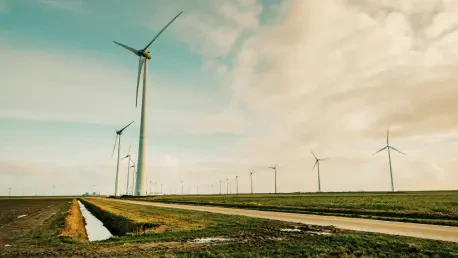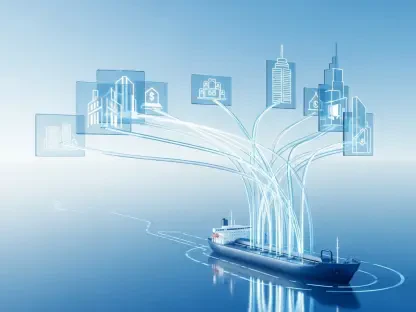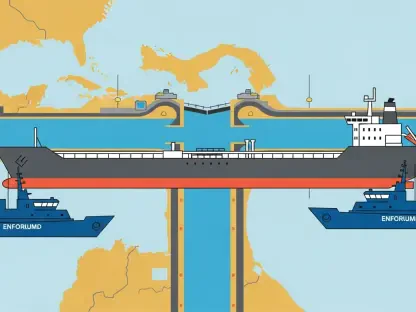Setting the Stage: A Volatile Energy Landscape Demands Stability
In the heart of Europe’s energy market, where price volatility has rattled industries and geopolitical tensions have exposed vulnerabilities, a significant shift is underway that demands attention. France’s state-owned energy giant, EDF, is spearheading an ambitious expansion of long-term energy contracts, aiming to secure stability for itself and its clients while targeting an additional 10.6 terawatt-hours (TWh) of power agreements by 2027. With this goal, EDF is not just responding to market fluctuations but actively shaping the future of energy security. This analysis explores the critical trends, data, and projections surrounding EDF’s strategy, delving into why this move matters in a region hungry for predictability. The stakes are high, as energy-intensive sectors and policymakers alike watch to see if this approach can redefine market dynamics.
Diving Deep: Market Trends and Strategic Analysis
Nuclear Backbone: EDF’s Long-Term Contract Ambitions
EDF’s current strategy hinges on expanding long-term power contracts under its nuclear production allocation contracts (CAPN) scheme, targeting utilities, distributors, and major industrial consumers. These contracts, set for delivery in early 2027, are projected to cover nearly 10% of EDF’s anticipated domestic nuclear output, estimated between 350 and 370 TWh for the 2026-2027 period. This focus on long-term agreements is a deliberate attempt to insulate both the company and its clients from the erratic price swings that have plagued the European energy market. However, a key challenge persists: current market prices for the near term remain substantially lower, diminishing the immediate appeal of locking into extended commitments. Despite this, the promise of shielding against future volatility holds weight for industries reliant on consistent energy costs.
Medium-Term Momentum: Balancing Flexibility and Security
While long-term contracts face resistance, EDF has carved out notable success with medium-term agreements spanning four to five years, securing volumes of 35 to 40 TWh—double the amount of longer deals. This trend reflects a clear market preference for shorter commitments that offer stability without the burden of decades-long obligations, especially among clients still cautious after recent energy crises. Medium-term contracts provide a pragmatic middle ground, delivering fixed-price predictability that aligns with the planning horizons of many businesses. Yet, this reliance on shorter durations raises questions about EDF’s ability to allocate nuclear output effectively over extended periods. The adaptability shown here underscores a customer-centric approach, positioning EDF as a responsive player in turbulent times.
Cross-Border Expansion: Opportunities and Obstacles
A striking element of EDF’s strategy is its outreach beyond French borders, making contracts available to competitors and businesses across Europe. This pivot toward a broader market signals an intent to diversify revenue streams and tap into regional growth potential, moving away from a historically domestic focus. However, this expansion is not without friction, as past efforts to prioritize international clients have sparked concerns among French stakeholders about neglecting national needs. Variations in energy demand and regulatory landscapes across Europe further complicate this endeavor, with some markets potentially embracing stable pricing while others hesitate. The delicate balance of catering to a wider audience without alienating domestic interests remains a critical factor in this cross-border push.
Data-Driven Insights: Quantifying Market Impact
Examining the numbers reveals the scale of EDF’s ambitions and the market’s response. The targeted 10.6 TWh of long-term contracts, though significant, pales compared to the 35-40 TWh secured in medium-term deals, highlighting a cautious but practical mindset among clients. Projections indicate that if EDF maintains its nuclear output trajectory, the CAPN scheme could stabilize a substantial portion of industrial energy costs in France and beyond by 2027. Yet, with current low market prices acting as a deterrent, the uptake of long-term agreements may lag unless volatility spikes. Industry analysis suggests that pairing these contracts with innovative structures, such as clauses for price adjustments, could bridge the gap between client hesitations and EDF’s strategic goals.
Future Projections: Shaping the Energy Contract Horizon
Looking ahead, several emerging trends are poised to influence EDF’s contract expansion. The European energy sector’s accelerating shift toward decarbonization could bolster the appeal of EDF’s nuclear-heavy portfolio, especially if contracts integrate renewable energy components or flexible terms. Technological advancements in grid management and energy storage may also enable more customized agreements, addressing client concerns over long-term rigidity. On the regulatory front, evolving European Union policies on cross-border trade could either streamline or complicate EDF’s international efforts, depending on market access and tariff frameworks. Forecasts suggest that over the next few years, EDF might pioneer hybrid contract models—blending long-term predictability with short-term adaptability—potentially setting a benchmark for competitors in the region.
Reflecting on the Past: Strategic Lessons and Next Steps
Looking back, EDF’s journey to expand long-term energy contracts across Europe offers a compelling case study in navigating market volatility and stakeholder tensions. The stronger demand for medium-term agreements over longer ones reveals a market still wary of extended commitments, while the push into international territories underscores both opportunity and complexity. For businesses, especially in energy-intensive sectors, the lesson is clear: engaging early with EDF to shape contract terms could secure cost stability. Policymakers, meanwhile, need to prioritize frameworks that balance national and regional energy needs. Moving forward, a recommended step is for industry leaders to advocate for tailored hybrid contracts, while EDF itself could explore integrating renewable options to enhance appeal. This strategic focus promises to build a more resilient energy landscape for all stakeholders.









